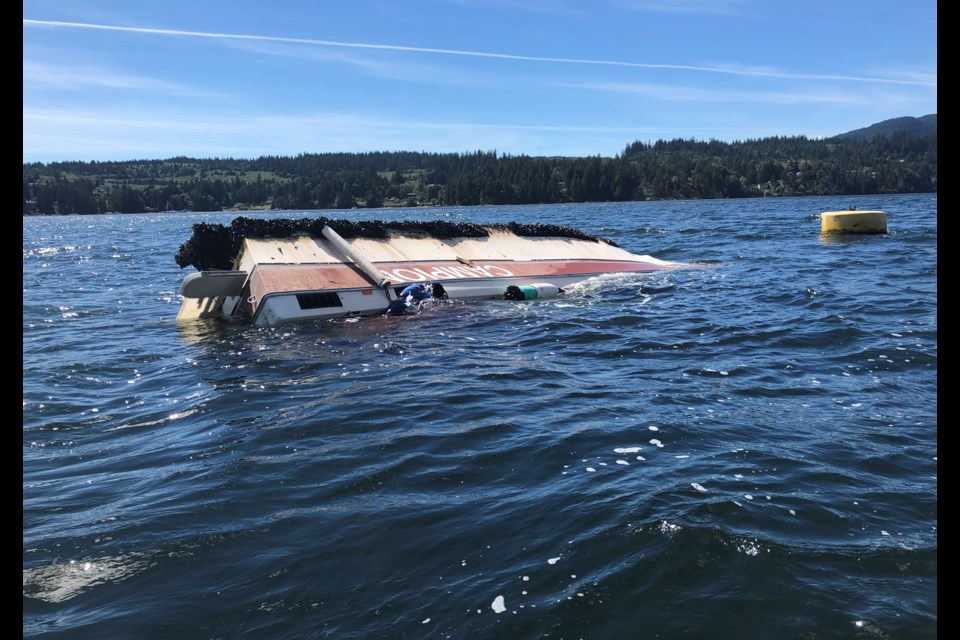Authorities are looking for the owner of a pleasure craft that capsized but remains attached to a yellow buoy in East Porpoise Bay.
Residents near Kontiki Road noticed the 24-foot fibreglass boat with the name Bald Eagle had capsized Aug. 3. “It was in very bad shape,” said Greg Deacon, secretary with the East Porpoise Bay Community Association, who lives along Kontiki Road.
The vessel has been attached to a “big yellow can buoy” a few hundred metres north of a nearby marina for at least five years “and it hasn’t moved,” said Deacon.
A Coast Guard official examined the partially submerged boat last week and confirmed it is not touching the bottom, remains at anchor and isn’t at risk of leaking fuel.
“Although the vessel does not pose a risk to pollute, it is a hazard to navigation,” said
Coast Guard communications officer Michelle Imbeau in an Aug. 10 email.
“Should the hazard increase with this vessel due to a sudden change in circumstance, [the Canadian Coast Guard’s] Vessels of Concern program may take immediate measures to mitigate that hazard.”
As of Monday, the Coast Guard had yet to reach the owner.
Residents were also concerned about the person who they believe was living on board, and called the RCMP after reporting a foul odour emanating from the site. An officer paddled over Aug. 7 and confirmed there was no concern for the safety of the resident, who is not the owner, and believe the smell was wafting from the Sechelt landfill, according to Sunshine Coast RCMP Const. Jihan McDougall.
Residents have raised concerns over the abandoned and derelict vessels accumulating in the area, said Deacon, who wants the District of Sechelt to establish a harbour authority to create more oversight.
Currently, under the Wrecked, Abandoned or Hazardous Vessels Act, the Coast Guard and Transport Canada share responsibility for boats affected by the Act.
Another concern about Bald Eagle came from Dianne Sanford of the Salish Sea Nearshore Habitat Recovery Project.
She feared the boat may interfere with a nearby eelgrass bed, but later confirmed it is resting offshore beyond the depth of the eelgrass growth. “There is a nice healthy bed between the shoreline and the sunken vessel, with a good-sized gap between,” she told Coast Reporter.
Porpoise Bay has been the site of several restoration projects led by the Habitat Recovery Project, including two in July.
Volunteers removed a derelict dock that was located near the dock used by Harbour Air Seaplanes, and planted 1,100 eelgrass shoots. Another 800 shoots were planted near the Lambs Brook beach access in Tuwanek. The area used to be an old log dump and sort, according to Sanford, who described the restoration attempt as “triumphant,” since planning had long been underway.
Eelgrass is a vital habitat for salmon smolts on their journey to the ocean. It also stabilizes the ocean floor, scrubs out toxins and releases oxygen.
The Nearshore Habitat Recovery Project has been underway for four years and 2021 will be the last for the federally-funded program. Launched by the SeaChange Marine Conservation Society, the program has also enabled restoration projects in Howe Sound, the Gulf Islands and Burrard Inlet.
For more information about the project or to become involved, contact Dianne Sanford, regional coordinator for Sechelt area, Salish Sea Nearshore Habitat Recovery Project: diannesanford@gmail.com



